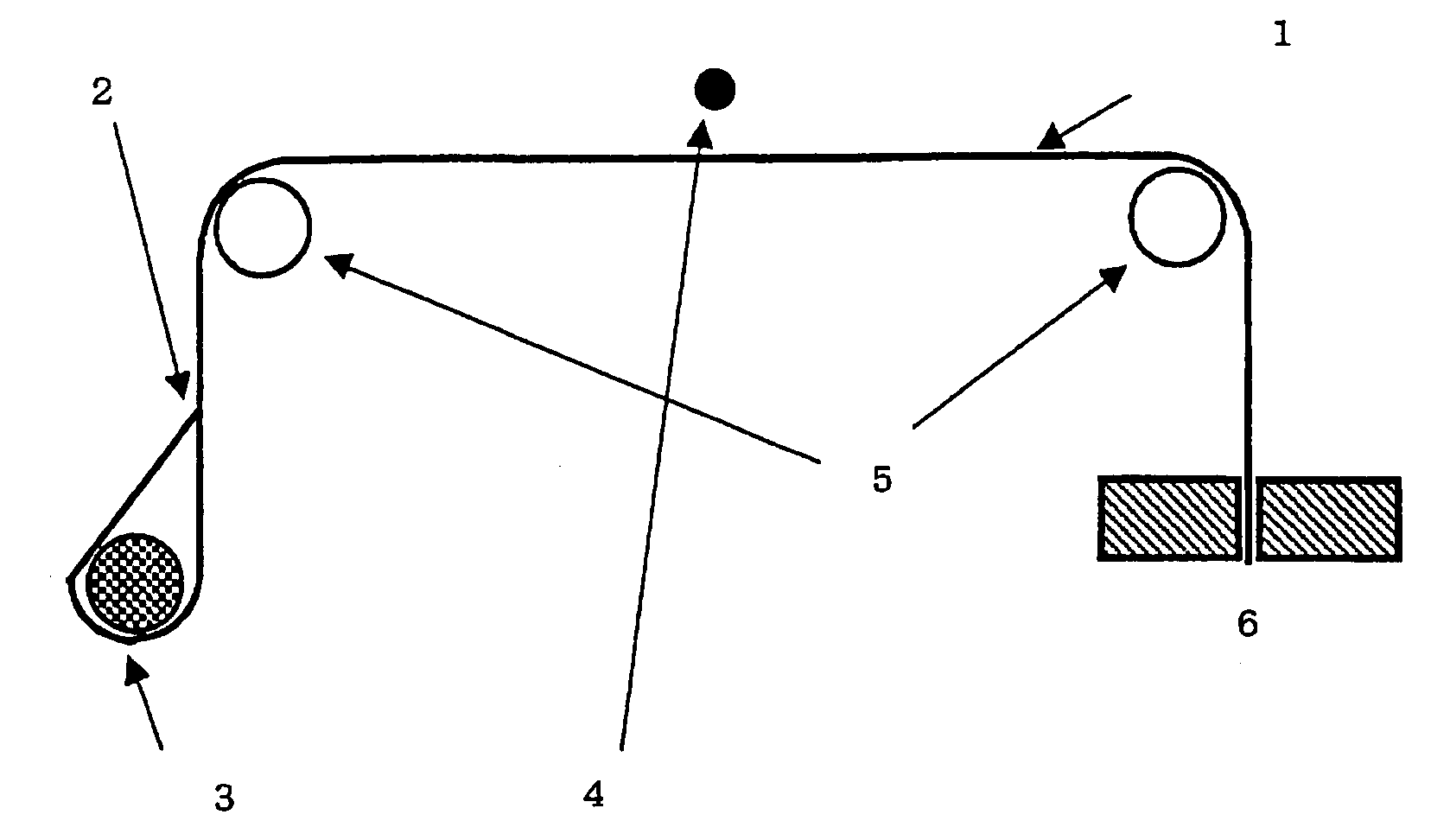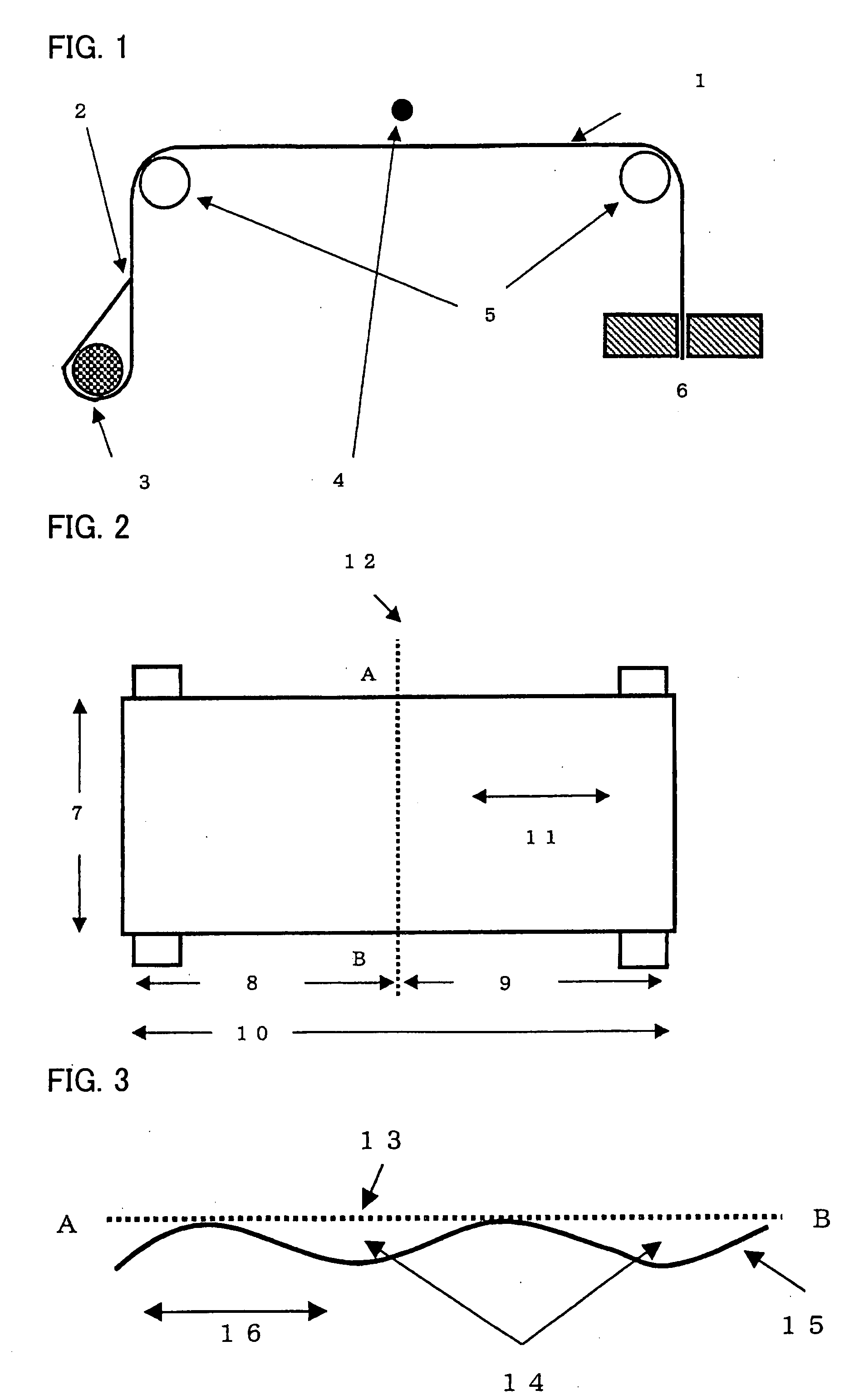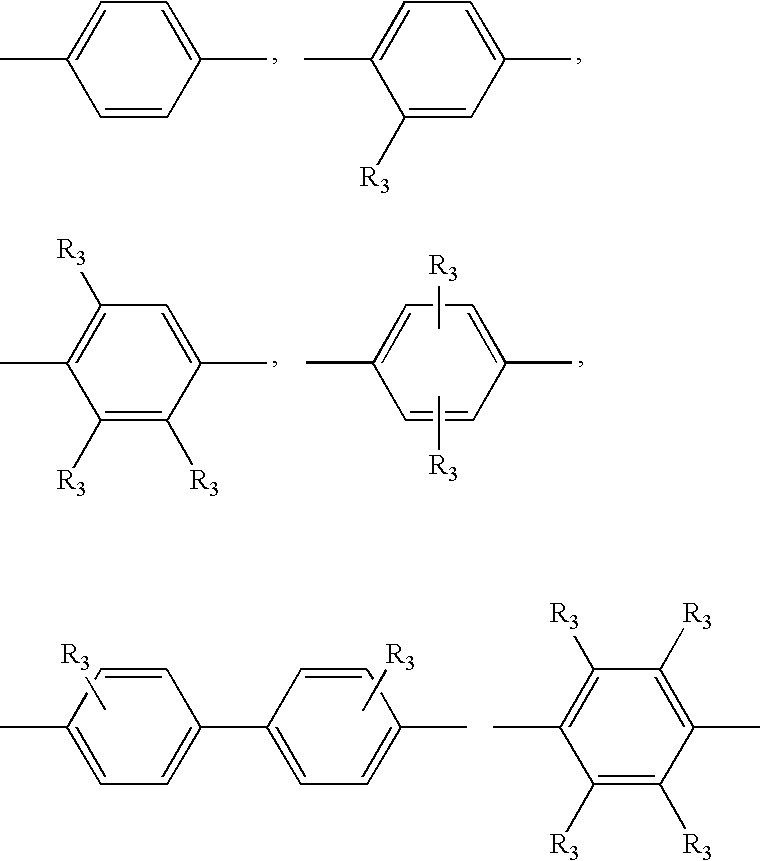Polyimide Film
a polyimide film and non-thermoplastic technology, applied in the direction of printed circuits, printed circuit aspects, electrical equipment, etc., can solve the problems of reducing the yield of fpc, increasing the cost and the like, and little progress in studying a method to obtain fpc reduced in dimensional change in a higher yield, so as to suppress the occurrence of dimensional change in production steps, improve the appearance yield, and reduce the effect of dimensional chang
- Summary
- Abstract
- Description
- Claims
- Application Information
AI Technical Summary
Benefits of technology
Problems solved by technology
Method used
Image
Examples
referential example 1
Synthesis of Nylon Denaturalized Epoxy Adhesive
[0145]45 parts by weight of diaminodiphenyl sulfone / dicyandiamide 4 / 1 20% methyle cellosolve solution was mixed with a solution obtained by mixing 50 parts by weight of polyamide resin (Platabond M1276 produced by Japan Rilsan Co.), 30 parts by weight of bisphenol A epoxy resin (EPICOTE 823 produced by Yuka-Shell Epoxy Co. Ltd.), 10 parts by weight of cresol novolak epoxy resin, and 150 parts by weight of toluene / isopropylalcohol 1 / 1 mixture solution, thereby preparing an adhesive solution. The adhesive was applied to a PFT film whose thickness was 25 μm so that the thickness of the adhesive after being dried was 11 μm, and the adhesive was dried at 120° C. for two minutes, thereby obtaining a B-stage adhesive on a support body.
(Evaluation of Thermoplasticity)
[0146]A polyimide film made of thermoplastic polyimide block component was produced by carrying out a sintering treatment at a maximum sintering temperature of 300° C. for a sinter...
example 1
[0147]25 mol of 2,2-bis[4-(4-aminophenoxy)phenyl]propane(BAPP) and 25 mol of 4,4′-diaminodiphenyl ether(4,4′-ODA) were dissolved in N,N-dimethylformamide (DMF) having been cooled down to 10° C. Then, 30 mol of 3,3′,4,4′-biphenyltetracarboxylic acid dianhydride (BPDA) was added to the resultant so as to be dissolved. Thereafter, 15 mol of pyromellitic acid dianhydride was added to the resultant and was stirred for one hour, thereby forming a thermoplastic polyimide precursor block component. 50 mol of paraphenylenediamine (p-PDA) was dissolved in the solution, and then 53 mol of pyromellitic acid dianhydride (PMDA) was added to the resultant and was stirred for one hour so as to be dissolved. Further, a DMF solution additionally prepared beforehand by adding PMDA was carefully added to the resultant, and the addition was stopped when its viscosity attained 2200 poise (23° C.). The resultant was stirred for one hour, thereby obtaining a polyamic acid solution (its solid concentration ...
example 2
[0150]The same operation as in Example 1 was carried out except that the heat treatment in the fourth oven was carried out at 490° C. for 10 seconds and the temperature unevenness in the width direction of the fourth oven was 45° C., thereby obtaining a polyimide film whose width was 1028 mm. Properties of the resultant film are shown in Table 1.
PUM
| Property | Measurement | Unit |
|---|---|---|
| tan δ peak temperature | aaaaa | aaaaa |
| tan δ peak temperature | aaaaa | aaaaa |
| tan δ | aaaaa | aaaaa |
Abstract
Description
Claims
Application Information
 Login to View More
Login to View More - R&D
- Intellectual Property
- Life Sciences
- Materials
- Tech Scout
- Unparalleled Data Quality
- Higher Quality Content
- 60% Fewer Hallucinations
Browse by: Latest US Patents, China's latest patents, Technical Efficacy Thesaurus, Application Domain, Technology Topic, Popular Technical Reports.
© 2025 PatSnap. All rights reserved.Legal|Privacy policy|Modern Slavery Act Transparency Statement|Sitemap|About US| Contact US: help@patsnap.com



